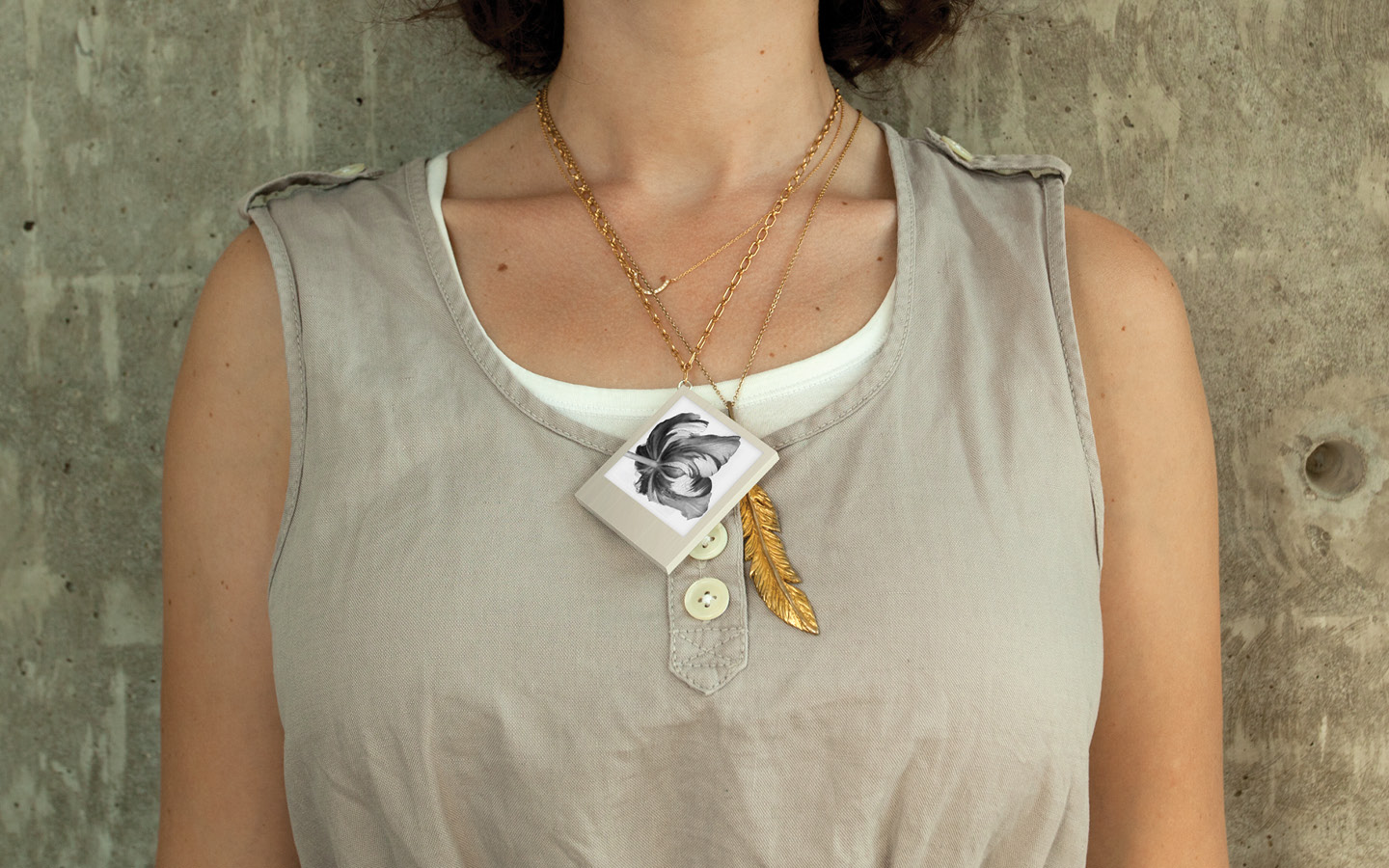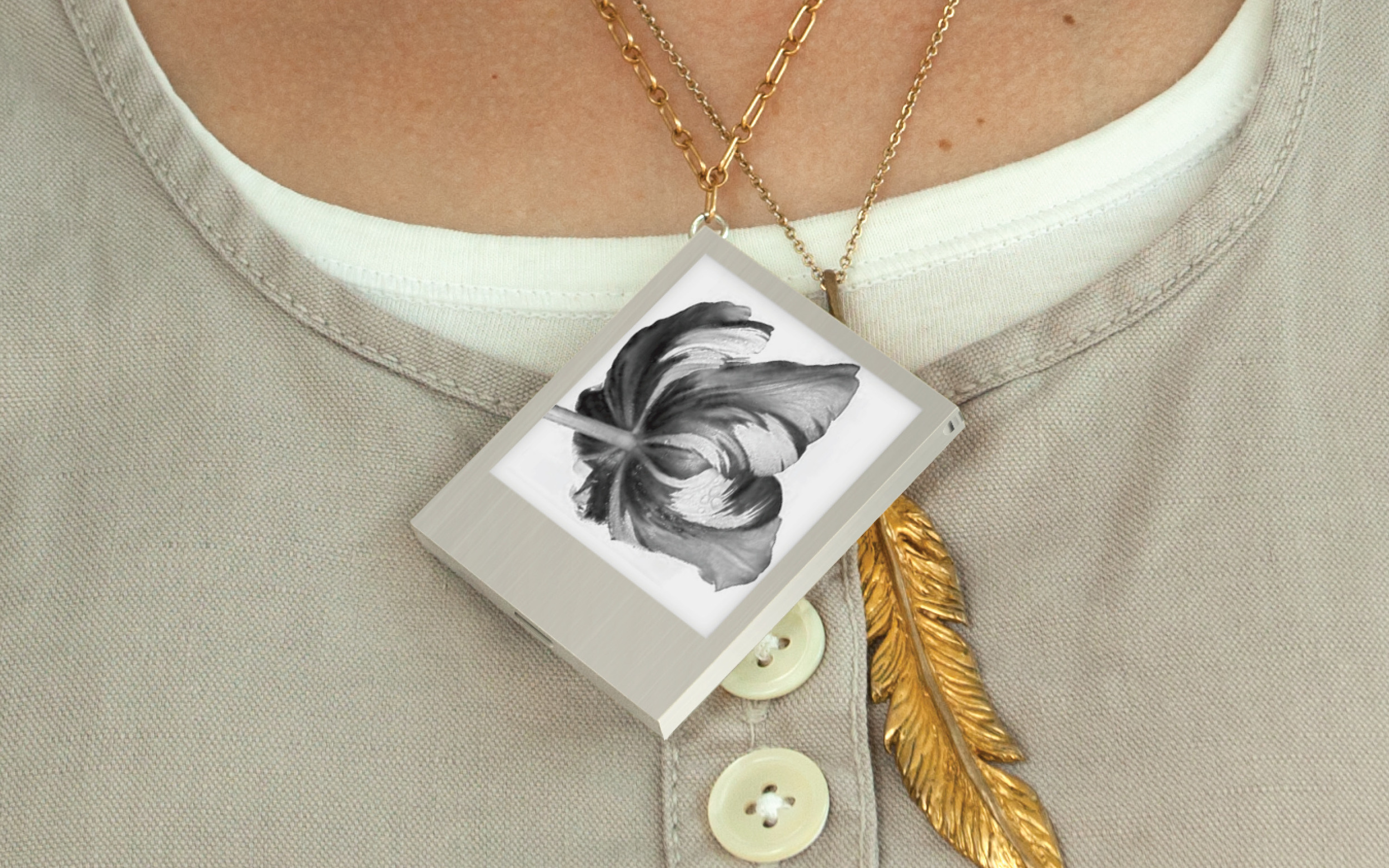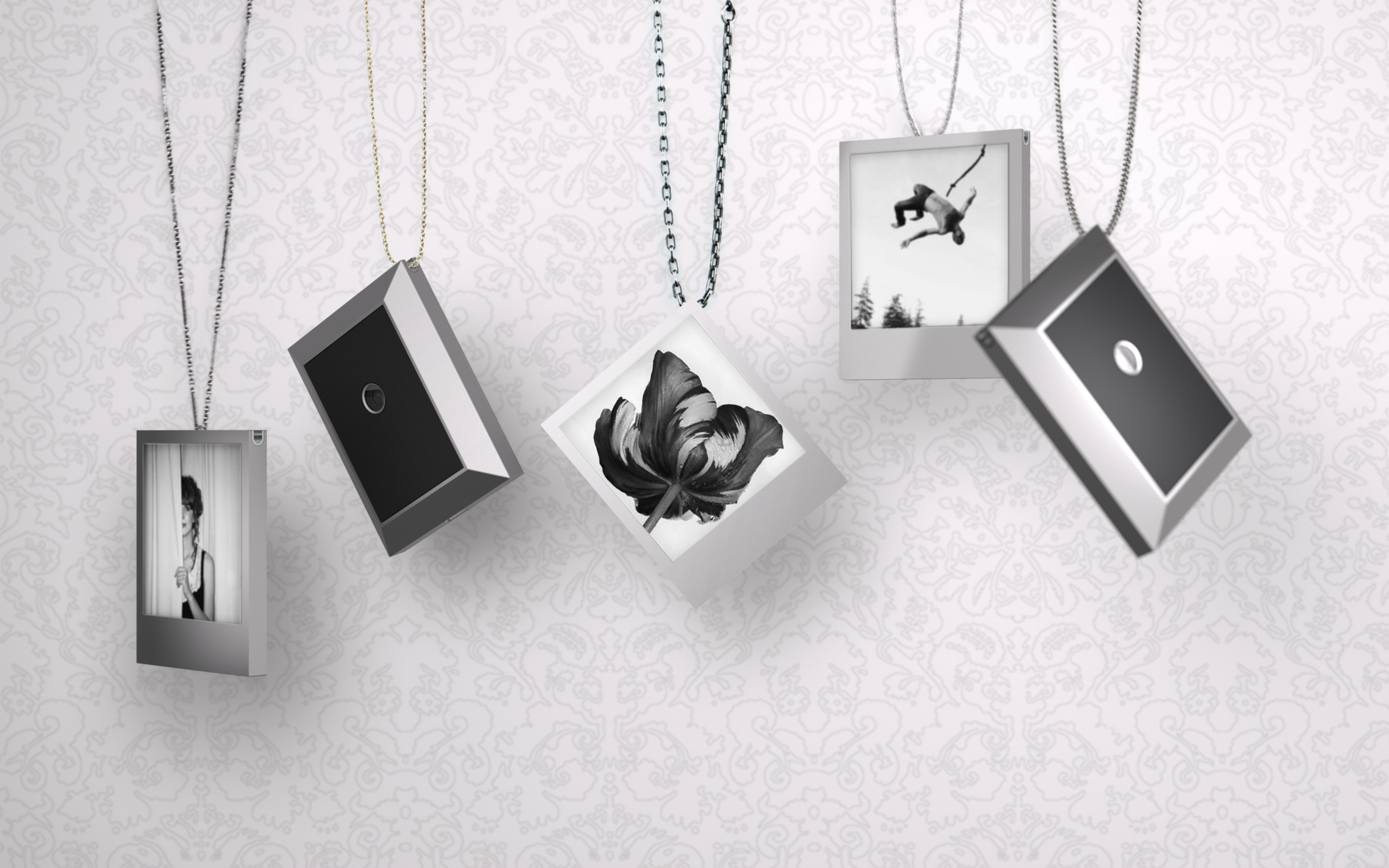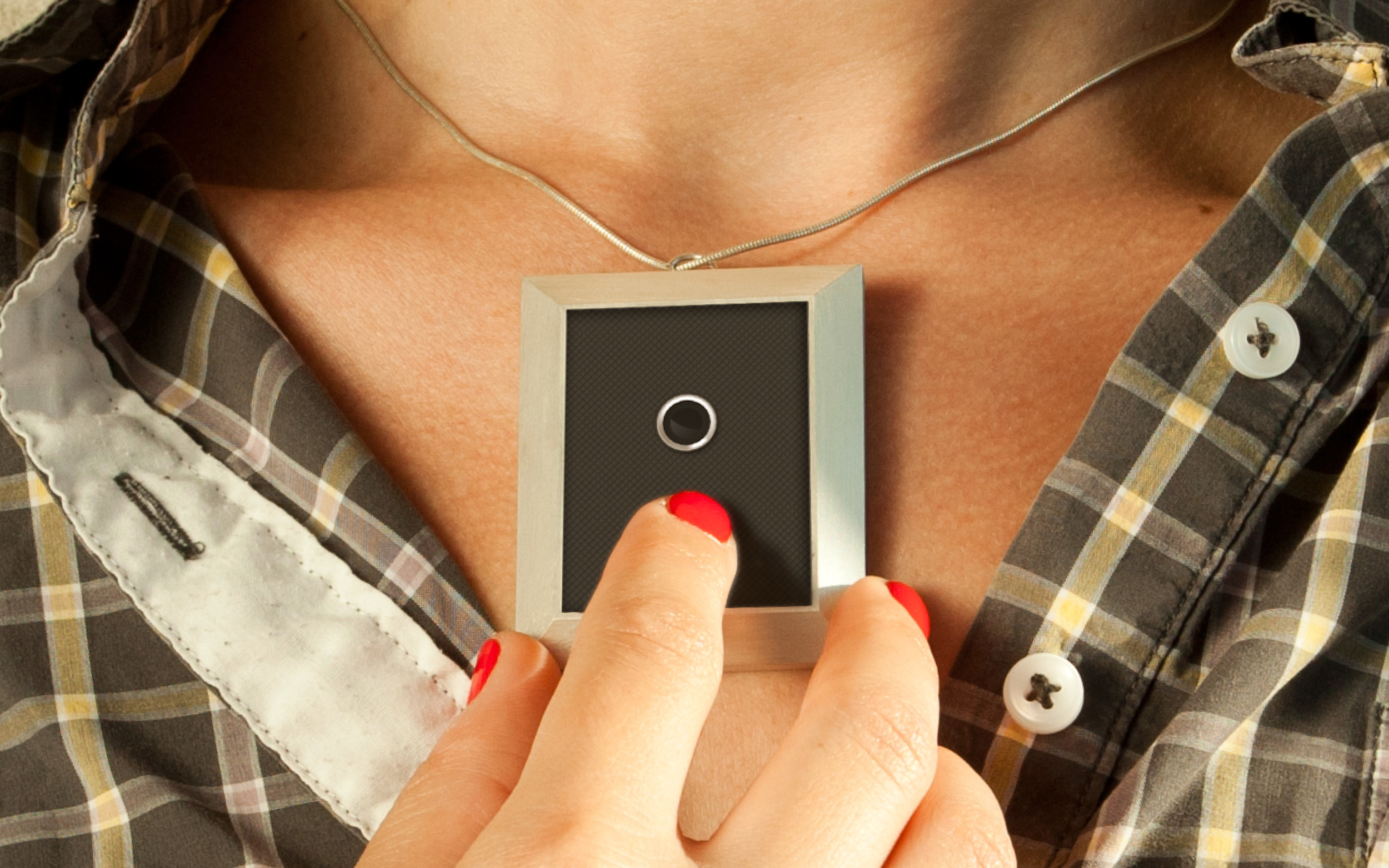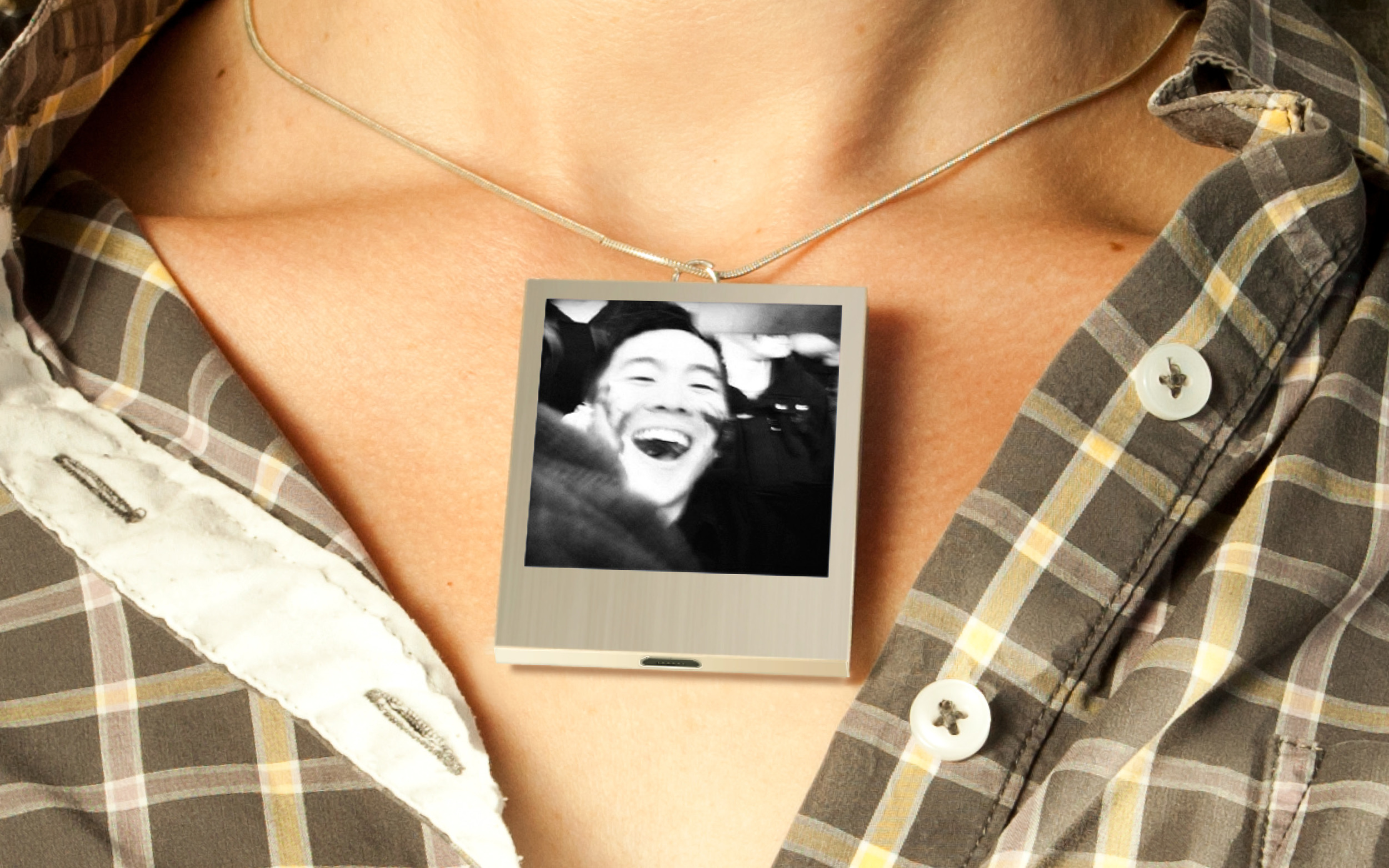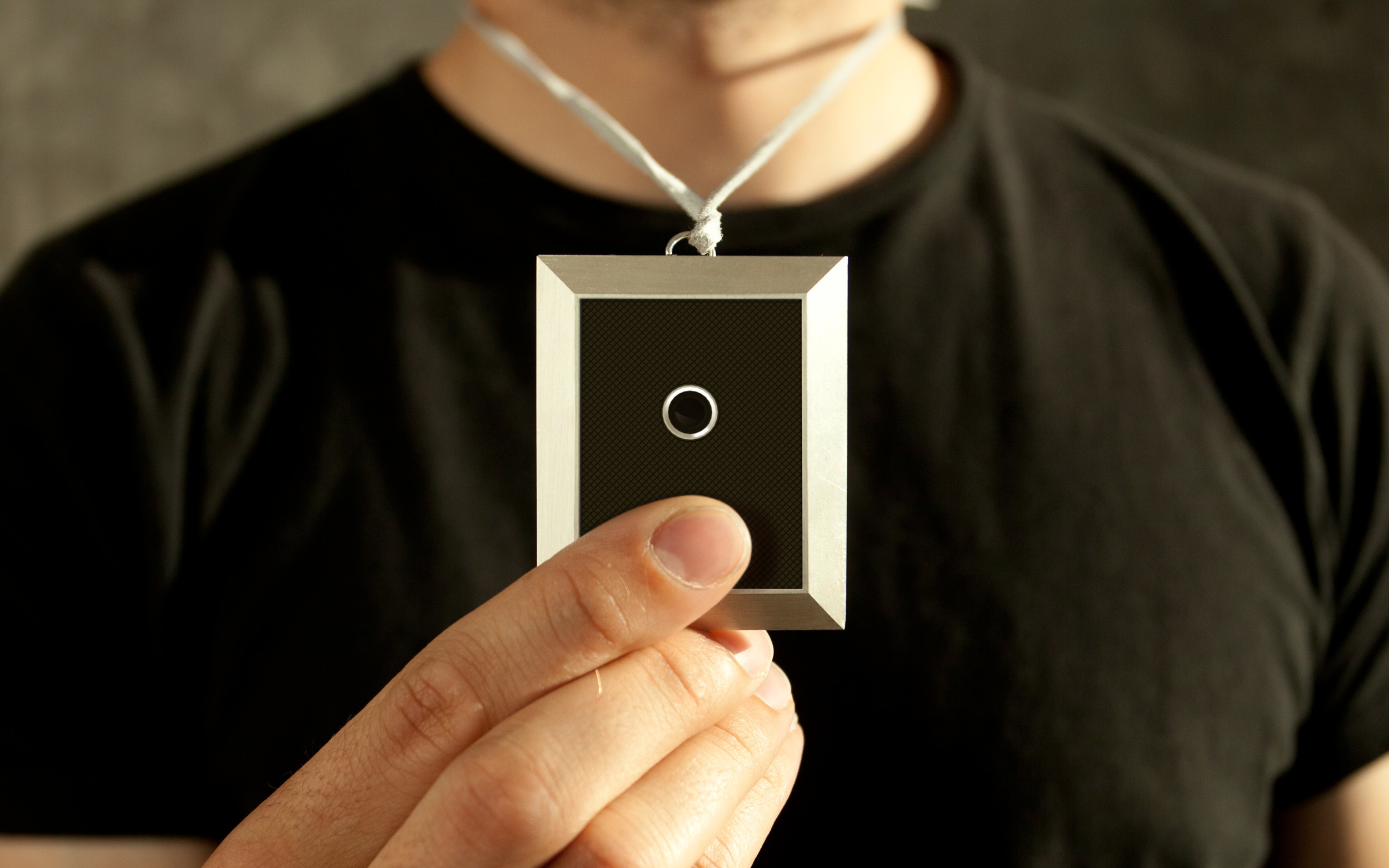A fun-first wearable camera that celebrates Polaroid’s instant photography heritage.
Polaroid approached Artefact Group to create an affordable camera that would stand out from the rest of the crowded digital camera market. We proposed taking the iconic Polaroid instant photo and bringing it into the digital age in a memorable way. The MEME wearable camera featured a camera on one face, and a framed e-ink display on the other face, letting teens capture and wear memories instantly.
Interaction Designer, August 2011
Recognition
Braun Prize 2012 – Special mention
IDEA Awards 2012 – Finalist
Objective
Tap into the mass-market with a sub-$250 photography product for young people that feels at home with the rest of the new Polaroid product lineup.
Polaroid reinvented itself in the late 2000’s with a new line of three forward-thinking concept cameras and wearable devices, and after seeing Artefact Group’s WVIL camera concept, Polaroid wanted to work together to build a spiritually similar product that made sense for their brand.
Approach
Brainstorm use cases and novel interactions based on hardware and software trends, then prototype and test concepts with our target market.
I reflected on what Polaroid represents – its iconic history, its spontaneity, and the creativity it enables – as well as the millions of personal moments captured on Polaroid’s iconic instant film. After surveying the point-and-shoot and wearable camera landscape, we began sketching use cases. We explored the possibilities that were enabled by new and maturing technologies like Bluetooth LE and E-Ink, as well as shrinking high-quality camera sensors and increasing battery life. And we thought about creative self-expression and the social experiences that mattered to teens and young adults.
Solution
The MEME camera concept enables users to focus on spontaneous self-expression, and compliments (rather than replaces) the camera on users' phones.
Polaroid has always been about fun, instant, accessible photography, and we wanted to reflect those qualities through a wearable camera pendant / e-ink display.
How it works
Capture
A tiny camera and single large button on one side makes it easy to grab and capture before the moment is gone. There’s no viewfinder or photo preview, making capturing the moment more spontaneous and surprising.
Display
An e-ink display on the other side can be configured to display either the last photo captured or a favorite photo indefinitely. Because e-ink displays use very little power, they’re well suited to show off digital photos without the same battery life concerns as modern LCD or OLED screens.
Competitive Landscape of 2011
The point-and-shoot camera market of 2011 was mature, bland, and undifferentiated.
There was little differentiation in terms of form factor or offerings between the majority of point-and-shoot camera brands. The megapixel wars were in full swing.
Meanwhile, smartphones were reducing/eliminating the need to have a dedicated device for photography and their cameras were only getting better.
How could Polaroid stand out in this ‘sea of sameness?’
These are all different manufacturers' cameras from 2011, with their branding removed. Which of these cameras was made by and reflects the heritage of the Polaroid brand? Which brand made which of these cameras, period?
People love Polaroid photos – the cameras are a means to an end.
What if the camera played off of the cultural icon of a Polaroid photo itself?
The “Polaroid” is the photo that comes out instantly. The camera is simply a means to an end.
These are all Google Image search results for 'Polaroid' (circa 2011, that is).
We used lo-fi physical prototypes to validate form factors and design concepts with potential users.
After discussing and sketching various design concepts, we began prototyping form factors and interaction patterns.
As the prototypes increased in fidelity, we set up feedback sessions with our target users to validate the camera’s appeal and find opportunities and new use cases. See the video below for some highlights.
Our industrial design team then worked with a hardware engineering partner to create a manufacturable product.
With evidence that we were onto something, our industrial design team took our prototype’s fidelity up to production-quality. While the physical hardware was being more fully realized, I worked with the rest of the team to explore the mobile companion experience for the product and helped build a pitch deck for getting Polaroid and their manufacturing partners on board.

